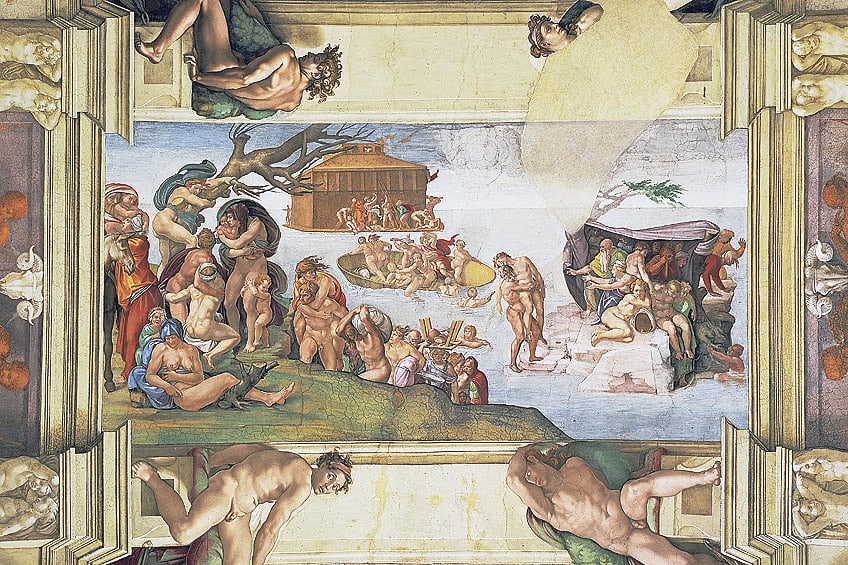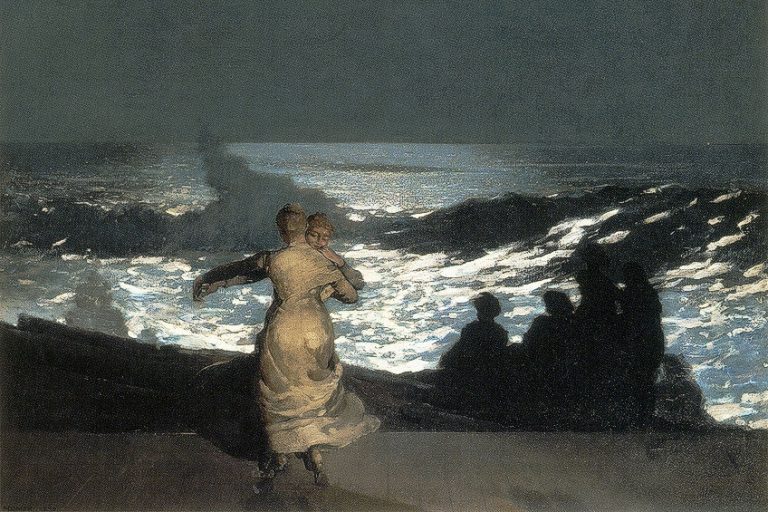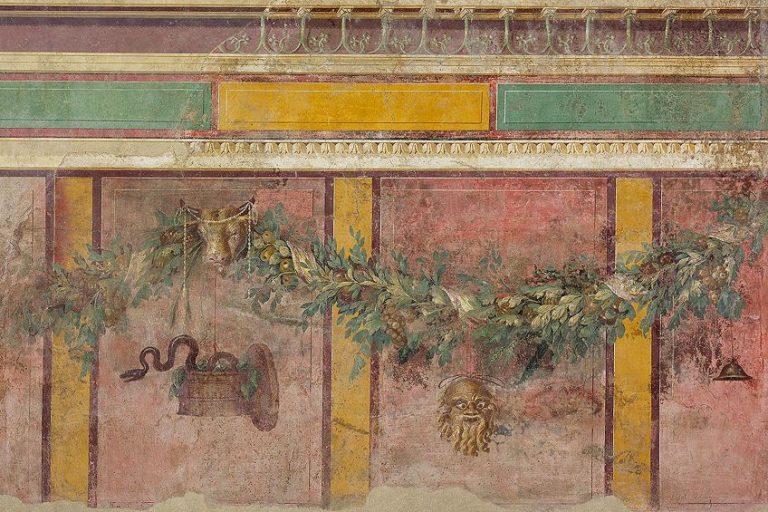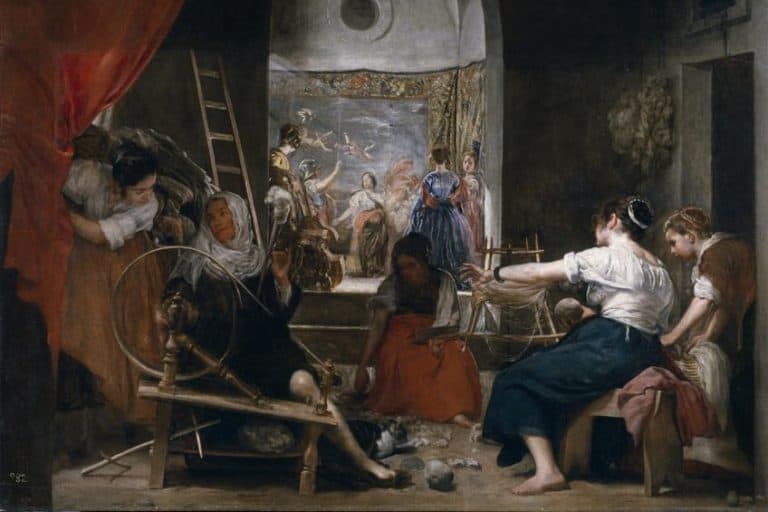“The Deluge” by Michelangelo – Genesis in Art
The Deluge, a monumental fresco by Michelangelo, forms a pivotal scene in the Sistine Chapel’s renowned ceiling, painted between 1508 and 1512. This masterpiece vividly captures the biblical flood as recounted in the Book of Genesis, showcasing Michelangelo’s unparalleled skill in portraying the human form and dramatic narrative. The chaotic scene depicts a desperate struggle for survival as humanity confronts divine retribution, emphasizing the raw emotional intensity and dynamic compositions that characterize Michelangelo’s work. The Deluge stands as a testament to the artist’s ingenuity and his ability to convey profound theological themes through powerful visual storytelling.
Key Takeaways
- Michelangelo’s The Deluge depicts a key biblical event with emotional depth.
- The fresco is part of the Sistine Chapel’s ceiling, commissioned by Pope Julius II.
- Its technical brilliance and profound narrative have left a lasting legacy in art history.
Historical Context and Michelangelo’s Commission
| Artist | Michelangelo (1475 – 1564) |
|---|---|
| Date Created | 1508 – 1512 |
| Medium | Fresco |
| Genre | Religious Art |
| Period/Movement | High Renaissance |
| Dimensions (cm) | 280 × 570 |
| Series/Versions | Part of the Sistine Chapel ceiling |
| Where Is It Housed? | Sistine Chapel, Vatican City |
| What It Is Worth | Not for sale; priceless cultural and historical value |
Michelangelo’s fresco, The Deluge, is a breathtaking masterpiece that captures a pivotal moment from the biblical narrative of Noah’s Ark. Painted between 1508 and 1512 on the ceiling of the Sistine Chapel in Vatican City, this scene is part of a larger series depicting stories from the Book of Genesis. This awe-inspiring artwork not only showcases Michelangelo’s unparalleled skill but also offers a profound reflection on human vulnerability in the face of divine judgment. The painting is organized into four distinct parts, separating people and landscapes through the physical space of water and sky. It illustrates the desperation and struggle of humanity trying to escape the relentless floodwaters.

Clusters of people seek refuge under makeshift shelters, emphasizing the overwhelming nature of the disaster and the scant hope they cling to amidst chaos. Commissioned by Pope Julius II, The Deluge holds a significant place in art history, marked by its emotional depth and technical brilliance. Michelangelo’s sculptural renderings of the human form stand out, making this fresco a crucial piece in the collection that adorns the Sistine Chapel’s ceiling. The fresco not only enhances the religious and artistic experience but also has left a lasting legacy on how biblical scenes are portrayed in Western art.
Patronage by Pope Julius II
Pope Julius II, who reigned from 1503 to 1513, was a significant figure in supporting the arts during the Renaissance. He commissioned Michelangelo to paint the Sistine Chapel ceiling, which included The Deluge. Julius II’s vision was grand. He wanted to glorify the Catholic Church and the Papal authority through art. Michelangelo, known for his advanced techniques and deeper understanding of human anatomy, was the right choice for this ambitious project.
The Sistine Chapel is situated in Vatican City, and it was a place where popes were elected and important ceremonies took place. Michelangelo’s frescoes had to meet the high standards of such a venue.
Impact of the Sistine Chapel on Renaissance Art
The Sistine Chapel ceiling is one of the greatest achievements in Western art. The ceiling includes The Deluge, part of a larger narrative from the Old Testament, specifically the Book of Genesis. Michelangelo’s use of fresco technique, vibrant color palette, and dramatic poses of the figures set new standards. His work influenced countless artists, elevating the status of visual art in society.

Key scenes such as the Creation of Adam and Eve and Noah and the Great Flood were not only religiously significant but also showcased the potential of human creativity and intellect. The intricate detail and emotion captured in these frescoes made a lasting impact on Renaissance art and beyond.
Analysis of The Deluge Fresco
Michelangelo’s The Deluge fresco on the Sistine Chapel ceiling is rich in composition, symbolism, and theological meaning. It showcases his mastery of artistic elements and his ability to convey complex religious themes.
Composition and Artistic Elements
In The Deluge, Michelangelo divides the scene into four parts using the physical space of the water and sky. This separation helps to highlight different narrative moments in the story of Noah. Figures are spread across the scene—some seeking refuge from the floodwaters, while others cling to the Ark. The detailed depiction of human forms draws inspiration from classical sculptures, such as the Belvedere Torso. Chiaroscuro is used to enhance the three-dimensional quality of the figures, demonstrating Michelangelo’s advanced technique. The scene’s dramatic tension and movement foreshadow Mannerist styles. Overall, his attention to detail and composition exemplify his unparalleled aesthetic sense.

Symbolism and Iconology
The Deluge is filled with symbolic meaning. Noah’s Ark represents salvation amidst the wickedness of humanity. People in the fresco strive for safety, symbolizing the desperate reach for divine grace. The stormy sky and rising waters reflect divine judgment and the cleansing of sin. The intricate positioning of figures and use of light and shadow also imply deeper iconological details, such as hope and despair. Michelangelo uses these elements to prefigure themes found in other parts of the Sistine Chapel, such as the Last Judgment fresco.
This interconnectedness reinforces the overall theological narrative.
Theological Interpretations
From a theological perspective, The Deluge serves as an allegory for baptism. Just as the floodwaters washed away sin and corruption, so does baptism cleanse the soul. The fresco also echoes the doctrine of typological relationships between the Old and New Testaments. Noah’s Ark prefigures the salvation offered through Christ. Each figure’s struggle against the floodwaters underscores mankind’s need for divine intervention. By depicting both the Ark and the peril outside, Michelangelo reminds viewers of the hope found in faith and the peril of wickedness. His message aligns closely with the teachings of the Church.

The Artistic Influence and Legacy of The Deluge
The Deluge by Michelangelo has influenced countless artists across different periods, from the Renaissance to modern times. Its use of dramatic figures and emotional intensity set new standards in art.
Renaissance and Mannerist Successors
Michelangelo’s The Deluge significantly impacted his contemporaries and successors in the Renaissance and Mannerist movements. Artists like Raphael were inspired by the dynamic forms and intricate compositions, integrating some of Michelangelo’s techniques into their own works.
The chiaroscuro method, which uses strong contrasts between light and dark, was enhanced and further developed by later artists.
The Mannerists, who followed the High Renaissance, adopted Michelangelo’s emotional intensity and exaggerated movements. These features are evident in their elongated figures and complex poses, pushing the boundaries of traditional composition.
Modern Influence and Interpretations
In modern times, The Deluge continues to inspire artists and art scholars. Its representation of human suffering and divine intervention resonates deeply. Contemporary artists have reimagined the scene in various contexts. For example, Kent Monkman’s 2019 The Deluge reinterprets the biblical flood as a narrative of colonization and Indigenous experiences. Such interpretations highlight the ongoing relevance of Michelangelo’s work.
The use of the Belvedere Torso in Michelangelo’s figures also set a precedent for anatomical accuracy in art, influencing modern figure drawing practices. These reinterpretations and influences underscore the lasting impact of Michelangelo’s The Deluge on both historical and modern art.
Preservation and Restoration Efforts
The Deluge, painted by Michelangelo on the Sistine Chapel ceiling, has undergone several preservation and restoration efforts to maintain its beauty and integrity. Cleaning the fresco has been a meticulous process. Dirt, soot, and grime gathered over centuries. Experts used gentle cleaning methods to remove these layers without damaging the original paint. The Vatican has prioritized the preservation of the Sistine Chapel. Regular inspections and maintenance ensure the fresco remains protected from environmental damage. This involves monitoring humidity and light levels to prevent further deterioration.
The restoration project in the late 20th century was significant.
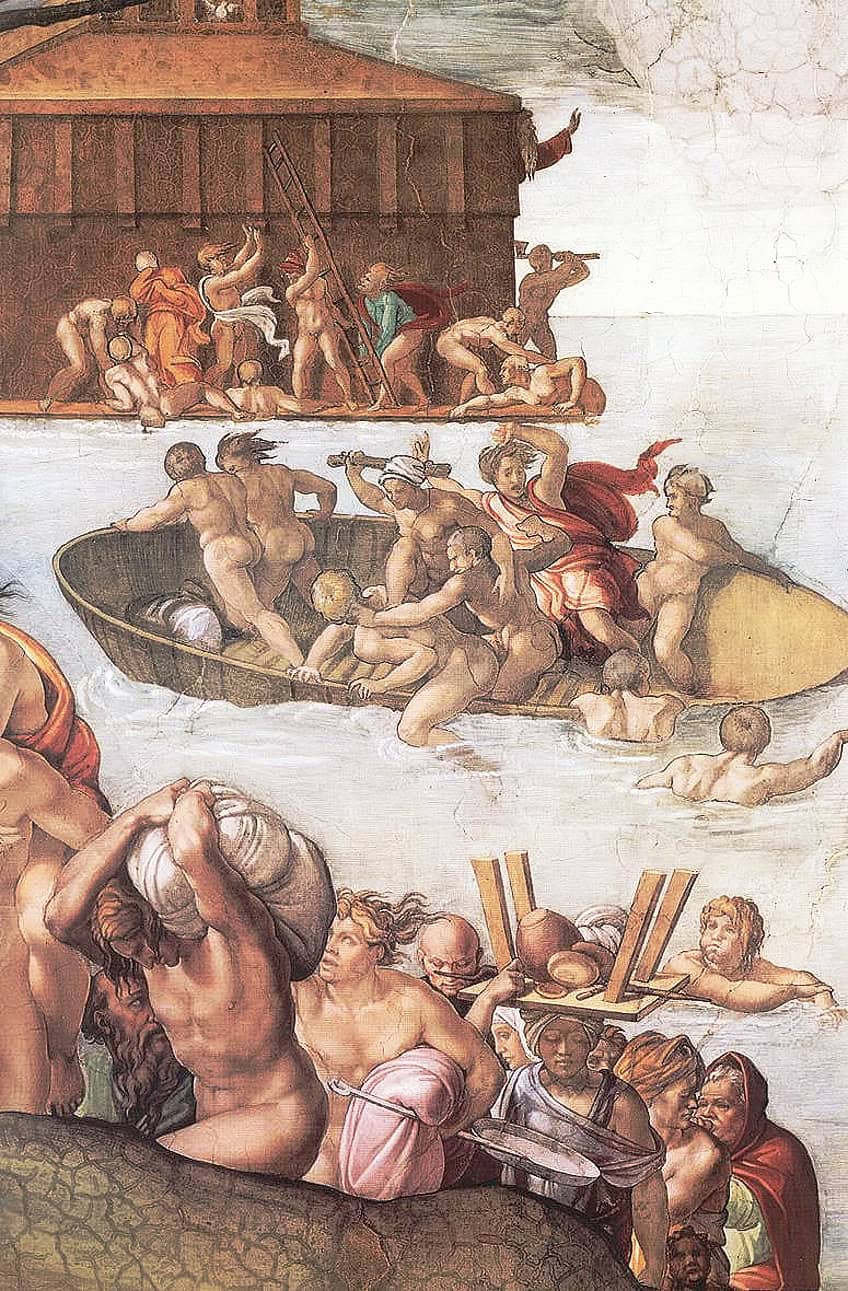
During this period, conservators aimed to restore Michelangelo’s original colors and details. This involved carefully removing centuries of varnish and overpainting that had altered the appearance of the artwork. Experts faced the challenge of preserving the artist’s intent while ensuring the artwork withstands the test of time. Techniques and materials used in restoration are documented for future reference, enhancing the understanding and appreciation of Michelangelo’s work. Efforts to preserve The Deluge continue to this day. Advanced technology and ongoing research improve methods, ensuring this masterpiece remains a vital part of art history for generations to come.
Michelangelo’s The Deluge is not only a testament to his extraordinary artistic prowess but also a profound exploration of human vulnerability and divine judgment. The fresco’s dynamic composition, emotional depth, and meticulous attention to detail reflect Michelangelo’s mastery in conveying complex narratives through art. As a crucial component of the Sistine Chapel ceiling, The Deluge continues to captivate viewers, offering a timeless reflection on themes of faith, morality, and the human condition. Its enduring impact underscores Michelangelo’s legacy as one of the most influential artists of the Renaissance, whose works continue to inspire and provoke thought centuries later.
Frequently Asked Questions
What Allegorical Narrative Does Michelangelo Depict in The Deluge on the Sistine Chapel Ceiling?
Michelangelo’s The Deluge illustrates the biblical story of Noah and the Great Flood. The painting portrays humanity’s struggle and desperation as they try to survive the catastrophic event. The artwork also signifies the concept of divine retribution and renewal.
Which Figures Are Prominent in Michelangelo’s The Deluge?
Prominent figures in The Deluge include Noah, who represents obedience to God, and the people struggling in the flood, symbolizing human frailty and the consequences of sin. The ark, a central element in the scene, symbolizes salvation and God’s mercy.
How Does Michelangelo’s The Deluge Relate to the Overall Theme of the Sistine Chapel Ceiling?
The Deluge fits into the grand narrative of the Sistine Chapel, which depicts stories from the Book of Genesis. It illustrates the theme of humanity’s fall from grace and the possibility of redemption, aligning with the broader theological messages presented across the ceiling.
How Does The Deluge Painting Reflect the Artistic Principles of the High Renaissance?
Michelangelo’s work in The Deluge reflects High Renaissance principles through its anatomical precision, dynamic composition, and realistic portrayal of emotions. The use of perspective and depth creates a dramatic and immersive scene, demonstrating Michelangelo’s expertise and adherence to the artistic standards of the period.
Isabella studied at the University of Cape Town in South Africa and graduated with a Bachelor of Arts majoring in English Literature & Language and Psychology. Throughout her undergraduate years, she took Art History as an additional subject and absolutely loved it. Building on from her art history knowledge that began in high school, art has always been a particular area of fascination for her. From learning about artworks previously unknown to her, or sharpening her existing understanding of specific works, the ability to continue learning within this interesting sphere excites her greatly.
Her focal points of interest in art history encompass profiling specific artists and art movements, as it is these areas where she is able to really dig deep into the rich narrative of the art world. Additionally, she particularly enjoys exploring the different artistic styles of the 20th century, as well as the important impact that female artists have had on the development of art history.
Learn more about Isabella Meyer and the Art in Context Team.
Cite this Article
Isabella, Meyer, ““The Deluge” by Michelangelo – Genesis in Art.” Art in Context. June 24, 2024. URL: https://artincontext.org/the-deluge-by-michelangelo/
Meyer, I. (2024, 24 June). “The Deluge” by Michelangelo – Genesis in Art. Art in Context. https://artincontext.org/the-deluge-by-michelangelo/
Meyer, Isabella. ““The Deluge” by Michelangelo – Genesis in Art.” Art in Context, June 24, 2024. https://artincontext.org/the-deluge-by-michelangelo/.


